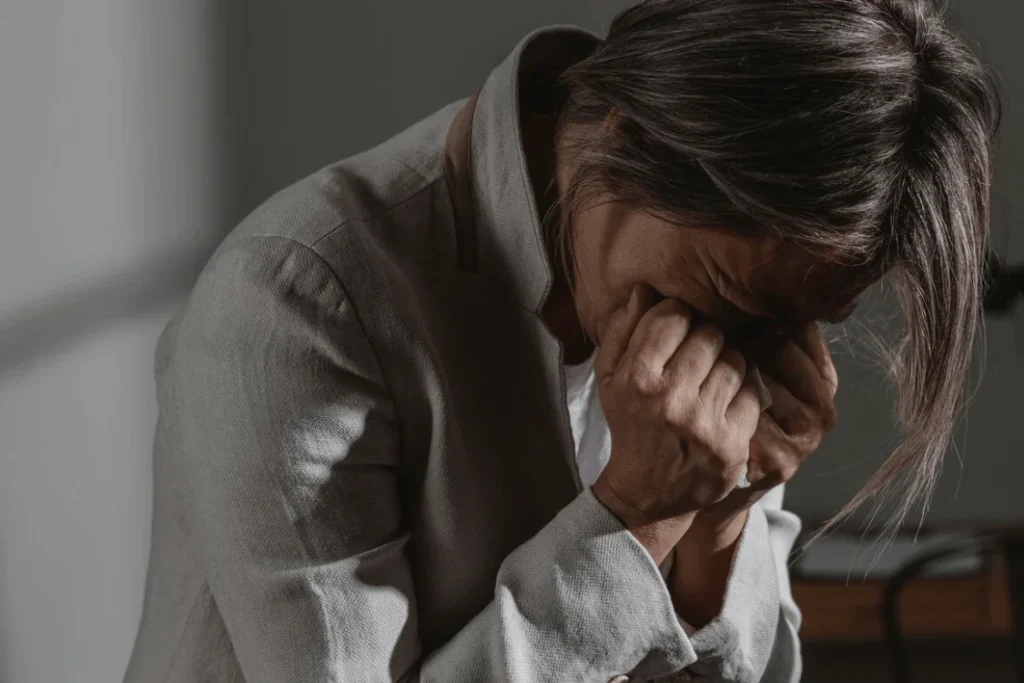
PTSD Treatment Options | Post-Traumatic Stress Disorder
When trauma lingers long after the moment has passed, it can leave you feeling disconnected from others, from daily life, even from yourself. If you or someone you care about is living with posttraumatic stress disorder (PTSD), you may already know how overwhelming the symptoms can feel.
But do you truly understand all the ways PTSD can be treated, and how recovery can be possible with the right support?
This guide is designed to offer a clear overview of PTSD treatment options, from gold-standard therapies to emerging interventions.
Understanding PTSD and Its Symptoms
Posttraumatic stress disorder (PTSD) is a mental health condition that can develop after experiencing or witnessing a traumatic event. It may cause a range of symptoms that disrupt everyday life, affect mood, and strain relationships.
According to the Department of Veterans Affairs, about 6% of the U.S. population will experience PTSD at some point in their lives.
PTSD Symptoms
The origins of PTSD symptoms typically emerge within a few months of trauma, but can appear later. They fall into four main categories:
- Intrusive memories: Flashbacks, nightmares, and distressing thoughts about the trauma.
- Avoidance: Steering clear of people, places, conversations, or activities related to the trauma.
- Negative thoughts and mood: Hopelessness, disinterest in activities, social withdrawal, memory difficulties, or negative beliefs about oneself or others.
- Changes in arousal and reactivity: Hypervigilance, sleep disturbances, irritability, or being easily startled.
Children may express symptoms through play that re-enacts the trauma or frightening dreams without clear content.
Diagnosis and Assessment
A diagnosis of PTSD requires evaluation by a mental health professional. This often includes a discussion of your trauma history, symptoms, and functional impairments. Clinicians may use interviews or symptom checklists to assess issues like flashbacks, avoidance, or insomnia.
To diagnose PTSD, symptoms must persist for more than a month and interfere with work, school, or relationships. Early diagnosis and ongoing care are critical for preventing complications like depression, anxiety disorders, or substance misuse.

Psychotherapy Approaches for PTSD
Several forms of psychotherapy have been shown to treat PTSD effectively. These trauma-focused therapies help reprocess traumatic memories, restructure harmful thoughts, and build coping skills.
Cognitive Behavioral Therapy (CBT)
Cognitive behavioral therapy (CBT) is a structured, goal-oriented approach that helps change negative thought patterns linked to traumatic stress. CBT sessions often involve confronting distressing memories, challenging harmful beliefs, and learning to manage symptoms in daily life.
In a clinical trial, researchers investigated whether guided internet-based cognitive behavioural therapy with a trauma focus (CBT-TF) was as effective as face-to-face CBT-TF for adults with mild to moderate PTSD following a single traumatic event. The study involved 196 participants, each receiving 12 therapy sessions of 60 to 90 minutes.
Results showed no significant difference between the two groups, demonstrating that online, therapist-guided CBT-TF is non-inferior to in-person therapy. This suggests that digital delivery of trauma-focused CBT can be an effective and accessible treatment option for PTSD, especially for patients who cannot easily access in-person care.
Cognitive Processing Therapy (CPT)
Cognitive processing therapy (CPT) is a specific type of CBT that focuses on the relationship between trauma-related beliefs and emotional responses. Throughout around 12 sessions, you work through unhelpful thoughts (such as guilt, blame, or distrust) and reframe them using writing and discussion.
Cognitive processing therapy for PTSD helps uncover and resolve “stuck points” that keep symptoms active, offering a powerful method for lasting relief.
Prolonged Exposure Therapy (PE)
Prolonged exposure therapy involves gradually facing trauma-related memories, emotions, and avoided situations. Over time, repeated exposure in a safe context helps retrain the brain to respond with less fear and distress.
This type of therapy often includes imagining the traumatic experience in detail or entering safe but previously avoided spaces. PE is supported by research as a good treatment for people who are experiencing PTSD and want to reduce avoidance.
Eye Movement Desensitization and Reprocessing (EMDR)
Eye movement desensitization and reprocessing (EMDR) combines guided recall of traumatic memories with side-to-side eye movements or other forms of bilateral stimulation. This approach helps the brain reprocess distressing experiences and store them in a less emotionally charged way.
EMDR follows a structured protocol with multiple phases, from preparation to memory desensitization. It is a widely used talk therapy that does not require you to describe your trauma in detail, making it a viable option for those with severe distress.
Medication and Alternative PTSD Treatment Options
When psychotherapy alone is not enough, medications for PTSD may help improve mood, sleep, and anxiety.

Antidepressants and SSRIs
The main treatment in medication is often selective serotonin reuptake inhibitors (SSRIs), which raise serotonin levels to support emotional balance. Common SSRIs include Sertraline (Zoloft), Paroxetine (Paxil), and Fluoxetine (Prozac).
These drugs are FDA-approved or widely used in the treatment of PTSD. While SSRIs are generally safe and non-addictive, it’s important to follow your doctor’s instructions to avoid withdrawal effects.
SNRIs, such as venlafaxine (Effexor), are another class of antidepressants that may be effective in some cases.
Other Medications
If SSRIs are ineffective, providers may prescribe prazosin for nightmares and sleep disturbances, antipsychotics or mood stabilizers in select cases, and benzodiazepines, which are used sparingly due to possible side effects and risk of dependence.
A psychiatrist will tailor your medication based on your mental health issues, trauma history, and personal response. Treatment can help, but close monitoring is essential.
Complementary and Alternative Therapies
Complementary holistic therapy approaches include:
- Yoga, meditation, and mindfulness to manage stress.
- Acupuncture and deep breathing to improve regulation.
- Transcranial magnetic stimulation (TMS) is an emerging tool for treatment-resistant cases.
These therapies should complement (not replace) evidence-based treatments.
Special Considerations and Support
Certain groups face distinct challenges and may benefit from adapted treatment strategies.
Veterans and Trauma-Specific Care
Military personnel often encounter unique forms of trauma, such as sexual assault, combat exposure, or moral injury. Providers affiliated with the National Center for PTSD offer specialized mental health care that respects the cultural and psychological needs of veterans.
Care for veterans may include group therapy, family therapy, and trauma-informed interventions from clinicians trained in guidelines for PTSD treatment options.
Narrative Exposure Therapy
Narrative exposure therapy (NET) helps people with multiple or prolonged traumatic events organize their life story, incorporating both negative and positive memories. This approach provides structure and context, reducing the emotional burden of recalling the traumatic.
NET is effective for those who have survived war, forced migration, or chronic violence. It is used in both individual therapy and group formats.
Coping Strategies and Recovery Support
Recovery often requires a blend of therapy, medication, and daily coping strategies. Practical tools include grounding exercises and mindfulness, maintaining routines for sleep and physical activity, and creative expression through music, writing, or art.
Joining a support group can help people with PTSD feel less isolated and more empowered. Working with a health care provider ensures that your progress is tracked and your treatment approach remains effective.

PTSD and Co-Occurring Substance Use or Behavioral Addictions
It’s not uncommon for people with PTSD to turn to alcohol, drugs, or compulsive behaviors as a way to cope with overwhelming symptoms. This can include using substances to numb intrusive memories, escape from anxiety, or manage insomnia.
Unfortunately, these short-term relief strategies often lead to long-term harm, creating a cycle that deepens both the trauma and the addiction. Research shows that patients with PTSD are at significantly higher risk of developing substance use disorders or behavioral addictions, such as gambling or compulsive eating, which can further impair judgment, emotional regulation, and physical health.
When PTSD and addiction occur together, treatment becomes more complex but also more essential. Addressing only one condition while ignoring the other often results in relapse or incomplete recovery.
Effective care involves integrated treatment plans that combine trauma-informed therapy with addiction services. This may include cognitive behavioral therapy, relapse prevention strategies, and medication when appropriate.
Finding the Right Treatment for PTSD and Addiction
Recovery from PTSD, especially when combined with addiction, requires a setting that prioritizes safety, trust, and personalised care. At Twilight Recovery, patients receive evidence-based treatment tailored to the complexities of trauma and co-occurring conditions.
Whether you’re seeking help for the first time or returning to care after a setback, the clinical team provides the structure, compassion, and tools needed to move forward. Healing takes time, but with the right support system in place, lasting recovery is possible.
Frequently Asked Questions
What are the most effective therapies for managing PTSD symptoms?
Trauma-focused therapies such as CBT, EMDR, and prolonged exposure therapy are the most effective treatments.
Can medication play a role in treating post-traumatic stress disorder, and what are the options?
Yes. SSRIs like sertraline and paroxetine are commonly used and may be combined with therapy.
How can cognitive behavioral therapy be tailored to address PTSD?
CBT targets trauma-related thoughts and behaviors using exposure and restructuring techniques. Cognitive therapy for PTSD helps reshape beliefs that sustain fear.
Are there any alternative or complementary treatments recognized for PTSD relief?
Yes, practices like meditation, yoga, and trauma therapy can help reduce anxiety and improve wellbeing when combined with standard treatment.
What is prolonged exposure therapy, and how does it work for PTSD patients?
It gradually reintroduces trauma reminders in a safe setting to help desensitize emotional reactions and improve function.
How do support groups contribute to the recovery process for individuals with PTSD?
They provide peer connection, validation, and tools to cope with stress, making them a valuable supplement to individual therapy.

